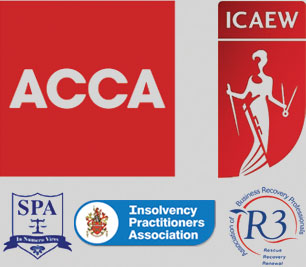
A Company Voluntary Arrangement (CVA) is a formal process that enables a company to reach a compromise with its creditors. The arrangement is based on a vote passed by a majority of creditors representing 75% or more in value of those voting on the proposal.
Once the arrangement is in place, all creditors are legally bound to accept the terms of the arrangement – including those who were non-voting or did not receive notice of the meeting.
The arrangement provides a structure for a proportion of the debts to be repaid over a fixed period of time – typically monthly contributions to the CVA supervisor.
To be eligible for a CVA, a company must be insolvent or near insolvency. The company must also be able to demonstrate that it is capable of making repayments under the CVA proposal.
If you are considering a CVA for your company, it is important to seek professional advice to ensure that the process is carried out correctly and that the arrangement is in the best interests of both the company and its creditors.
How Does the CVA Process Work?
The first step in the process is to appoint an insolvency practitioner (IP) to advise.. The IP will assess the financial situation of the company and, if appropriate, produce a CVA proposal for creditors to vote on.
Once the proposal has been approved by creditors, it will be posted to all creditors and Companies House will be updated. The arrangement will then come into effect and the company will usually make monthly contributions to the CVA supervisor, which will be used to repay creditors over the agreed period of time.
If the company fails to make the required payments or breaches any other terms of the arrangement, the CVA can be terminated and the company may be placed into administration or liquidation.
What Are the Benefits of a CVA?
A CVA can provide a number of benefits for both the company and its creditors, including:
– enabling the company to continue trading and avoid insolvency;
– providing a structure for repayments to creditors;
– freeze interest and charges on the debt;
– protecting the company from legal action by creditors;
– giving the company time to restructure its business and return to profitability.
What are the risks of a CVA?
There are a number of risks associated with CVAs, including:
– the CVA may not be approved by creditors, which could result in the company being placed into administration or liquidation;
– the company may breach the terms of the CVA, which could lead to the arrangement being terminated and the company being placed into administration or liquidation;
– the company may be unable to trade successfully during the CVA which could result in the company ultimately being placed into administration or liquidation.
– the CVA only binds the unsecured creditors. The CVA does not bind any secured creditors or preferential creditors (including HMRC for the majority of its debt and the employees for wages).
Professional advice should be sought before entering into a CVA to ensure that it is in the best interests of both the company and its creditors.
Summary of the CVA Process:
1. Appoint an insolvency practitioner (IP) to act as a supervisor for the CVA.
2. The IP will assess the financial situation of the company and produce a CVA proposal for creditors to vote on.
3. Once the proposal has been approved by creditors, it will be filed with the court and posted to all creditors.
4. The arrangement will then come into effect and the company will make monthly contributions to the CVA supervisor, which will be used to repay creditors over the agreed period of time.
5. If the company fails to make the required payments or breaches any other terms of the arrangement, the CVA can be terminated and the company may be placed into administration or liquidation.


Follow Us!